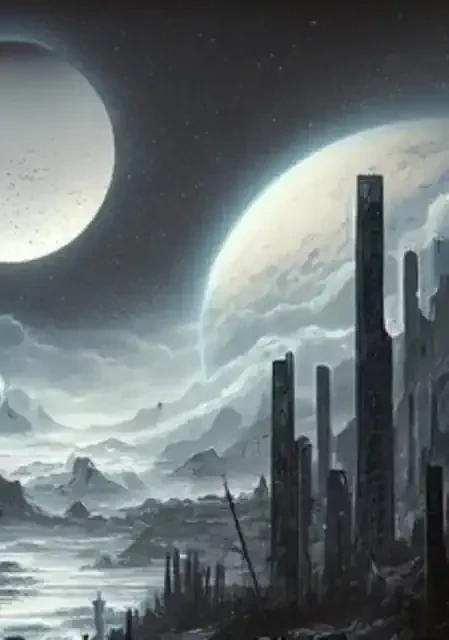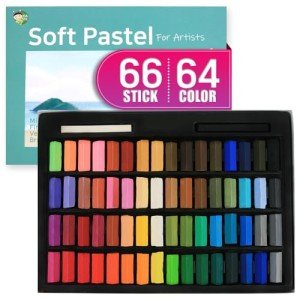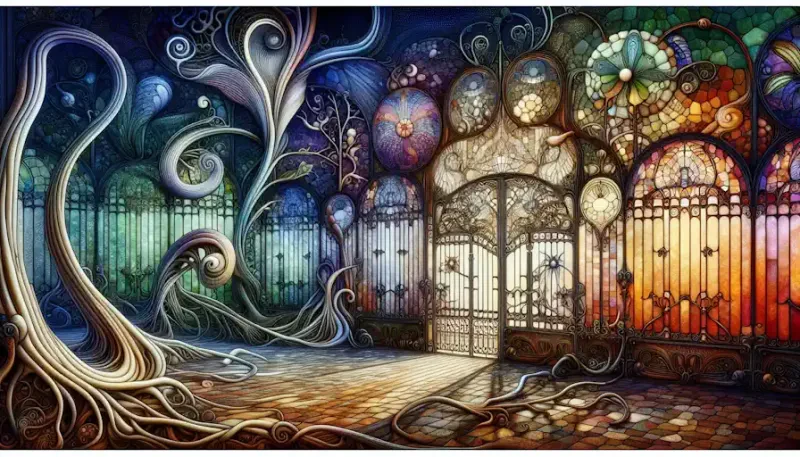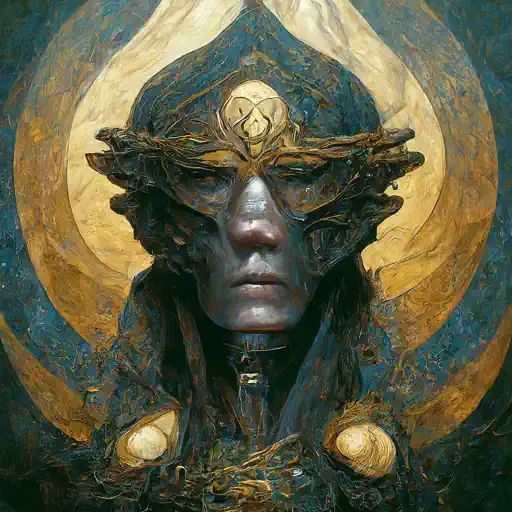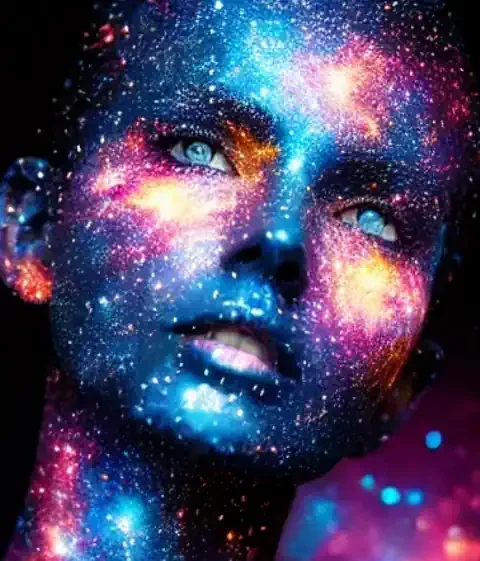Introduction
Concept art serves as the foundational blueprint for countless creative endeavors across various industries, from blockbuster films to bestselling video games and awe-inspiring theme parks. It embodies the initial spark of imagination, the first strokes that bring to life worlds yet unseen, characters yet unmet, and stories yet untold. This introduction aims to delve into the essence of concept art, exploring its definition, historical significance, and its indispensable role in shaping the visual landscape of contemporary media.
Definition of Concept Art
Concept art, at its core, is the visual interpretation of ideas, serving as the visual language through which creators communicate their vision. It encompasses a wide array of artistic disciplines, including illustration, digital painting, 3D modeling, and matte painting, among others. Unlike traditional art forms that emphasize the final product, concept art is primarily concerned with the process of creation, focusing on generating ideas, exploring visual concepts, and solving creative problems.
Concept art can take many forms, ranging from rough sketches and thumbnail drawings to elaborate digital paintings and fully-realized 3D models. Its purpose extends beyond mere aesthetics; it is a tool for storytelling, world-building, and problem-solving. Whether depicting futuristic cityscapes, mythical creatures, or intricate machinery, concept art serves as the bridge between imagination and realization, guiding the creative process from initial concept to final execution.
Importance of Concept Art in Various Creative Industries
The influence of concept art spans a multitude of creative industries, each benefiting from its unique blend of artistic vision and practicality. In the realm of film and television, concept art plays a crucial role in pre-production, helping directors, producers, and designers visualize the look and feel of a project before a single frame is captured. From character designs to set layouts, concept art provides a visual roadmap that informs every aspect of production, ensuring a cohesive and immersive cinematic experience.
Similarly, in the realm of video games, concept art serves as the cornerstone of game development, shaping the visual identity of virtual worlds and interactive experiences. Game designers use concept art to establish the aesthetic tone, define the characters and environments, and iterate on gameplay mechanics. Whether crafting sprawling open-world landscapes or intricate character designs, concept artists play a vital role in bringing virtual worlds to life.
Beyond entertainment media, concept art finds application in fields such as architecture, industrial design, and advertising, where it is used to visualize concepts, communicate ideas, and explore design possibilities. From architectural renderings and product prototypes to advertising campaigns and marketing materials, concept art lends its creative prowess to a diverse range of industries, enriching the visual landscape of our everyday lives.
The Evolution of Concept Art
The evolution of concept art is a fascinating journey through the annals of creative history, marked by pivotal moments of innovation, technological advancements, and shifts in artistic paradigms. This section aims to provide a comprehensive overview of the historical development of concept art, tracing its roots from ancient civilizations to its modern-day incarnation as a cornerstone of contemporary visual storytelling.
Historical Overview of Concept Art
The origins of concept art can be traced back to the dawn of human civilization, where early artists adorned cave walls with depictions of their surroundings, hunting expeditions, and mythological narratives. These ancient artworks served not only as expressions of creativity but also as practical tools for communication and storytelling, laying the groundwork for the concept art practices we see today.
Throughout history, concept art has played a vital role in shaping cultural narratives and visual aesthetics across different civilizations and artistic movements. From the intricate architectural sketches of the Renaissance to the fantastical illustrations of the Romantic era, concept art has continually evolved alongside advancements in technology, society, and artistic expression.
The modern concept art as we know it began to take shape in the early 20th century with the rise of cinematic storytelling and the birth of the animation industry. Pioneering artists like Albert Robida, Gustave Doré, and William Cameron Menzies paved the way for the use of visual concepts in film and animation, laying the foundation for the concept art practices that would follow.
Key Milestones and Developments
The 20th century witnessed several key milestones and developments that propelled the evolution of concept art into the forefront of creative industries. In the realm of film, the groundbreaking work of artists like Ralph McQuarrie revolutionized the way filmmakers conceptualized and visualized their projects, with iconic concept art for films like "Star Wars" setting new standards for visual storytelling.
The advent of digital technology in the late 20th century further expanded the possibilities of concept art, enabling artists to create intricate digital paintings, 3D models, and virtual environments with unprecedented ease and flexibility. This digital revolution not only transformed the tools and techniques used in concept art but also opened up new avenues for collaboration, communication, and creative expression.
Today, concept art continues to evolve in response to emerging technologies, shifting cultural landscapes, and evolving storytelling techniques. From traditional pen-and-paper sketches to cutting-edge digital renderings, concept art remains an essential component of the creative process, guiding the vision and imagination of artists and creators around the world.
The Role of Concept Art in Creative Processes
Concept art serves as the cornerstone of the creative process, providing a visual framework through which ideas are explored, refined, and ultimately realized. This section delves into the multifaceted role of concept art in shaping the creative landscape across various industries, from film and animation to video games and beyond.
How Concept Art Informs and Guides the Development of Projects
At its core, concept art is a tool for exploration and visualization, allowing creators to flesh out ideas, characters, and environments in vivid detail. In the early stages of a project, concept artists work closely with directors, writers, and designers to brainstorm ideas, develop visual concepts, and establish the overall aesthetic direction of the project.
Through sketches, mood boards, and preliminary renderings, concept artists help to clarify and communicate the vision of the project, ensuring that all stakeholders are aligned and working towards a common goal. As the project progresses, concept art serves as a roadmap for production, providing reference materials and visual cues to guide the work of designers, animators, and other creative professionals.
Examples of Concept Art Influencing Final Products
The influence of concept art can be seen in virtually every aspect of the creative process, from character designs and set layouts to costume choices and color palettes. In film and television, iconic concept art has played a pivotal role in shaping the visual identity of some of the most beloved franchises in pop culture history.
For example, the otherworldly landscapes and alien creatures depicted in James Cameron's "Avatar" were brought to life through the visionary concept art of artists like Dylan Cole and Ryan Church, whose stunning artwork helped to establish the lush, immersive world of Pandora. Similarly, the iconic character designs and futuristic cityscapes of "Blade Runner" were realized through the visionary concept art of artists like Syd Mead, whose distinctive style and aesthetic vision helped to define the cyberpunk genre.
In the realm of video games, concept art serves as the foundation upon which virtual worlds are built, providing artists and designers with a visual reference for everything from level layouts and enemy designs to weapon concepts and environmental details. Games like "The Legend of Zelda: Breath of the Wild" and "The Last of Us" are renowned for their breathtakingly beautiful visuals, which were brought to life through the painstaking work of concept artists who meticulously crafted every aspect of the game world.
In summary, concept art plays a vital role in shaping the creative landscape of the entertainment industry, providing artists and creators with a visual language through which to explore ideas, communicate concepts, and ultimately bring their visions to life. Whether depicting fantastical realms or dystopian futures, concept art serves as a testament to the power of imagination and the enduring appeal of visual storytelling.
Concept Art Techniques and Tools
Concept art is a versatile and dynamic field that encompasses a wide range of techniques and tools, from traditional drawing methods to cutting-edge digital technologies. This section explores the various techniques used by concept artists to bring their ideas to life and the tools they rely on to create stunning visuals.
Overview of Common Techniques Used in Creating Concept Art
Concept artists employ a diverse array of techniques to realize their creative visions, drawing inspiration from traditional art forms such as drawing, painting, and sculpture, as well as more contemporary techniques like digital rendering and 3D modeling.
Sketching is a fundamental technique used by concept artists to quickly capture ideas and explore visual concepts. Whether using pencil and paper or digital sketching software, sketching allows artists to experiment with composition, form, and perspective, laying the groundwork for more detailed renderings.
Digital painting is another popular technique used by concept artists to create detailed and immersive visuals. Digital painting software such as Adobe Photoshop and Corel Painter offer a wide range of tools and features that allow artists to simulate traditional painting techniques digitally, from realistic brush strokes to dynamic lighting effects.
In addition to 2D techniques like sketching and painting, many concept artists also utilize 3D modeling software to create detailed models and environments. 3D modeling allows artists to explore concepts from multiple angles and perspectives, making it an invaluable tool for visualizing complex designs and spatial relationships.
Discussion of Digital vs. Traditional Methods
The debate between traditional and digital methods in concept art is a longstanding one, with proponents on both sides arguing the merits of each approach. Traditional methods offer a tactile and hands-on experience that many artists find appealing, allowing them to connect more intimately with their materials and create artwork with a unique sense of texture and depth.
On the other hand, digital methods offer a level of flexibility and versatility that is unmatched by traditional techniques. Digital painting software allows artists to experiment with colors, textures, and compositions in real-time, making it easier to iterate on ideas and explore different visual concepts.
Ultimately, whether an artist chooses to work with traditional or digital methods depends on their personal preferences and artistic goals. Some artists may prefer the tactile experience of working with physical materials, while others may appreciate the convenience and flexibility of digital tools.
Essential Tools for Concept Artists
Regardless of the techniques they use, concept artists rely on a variety of tools to bring their ideas to life. Traditional artists may use pencils, pens, markers, and brushes, while digital artists may use graphics tablets, styluses, and drawing software.
In addition to these basic tools, concept artists may also use reference materials such as photographs, books, and online resources to inform their work and ensure accuracy and realism in their designs.
Overall, the techniques and tools used by concept artists are as diverse and varied as the artists themselves, reflecting the rich tapestry of creativity and innovation that defines the field of concept art. Whether working with traditional or digital methods, concept artists continue to push the boundaries of visual storytelling, creating immersive and captivating worlds that inspire and delight audiences around the globe.
From Imagination to Reality: Bringing Concepts to Life
The journey from initial concept to tangible creation is a transformative process that lies at the heart of concept art. This section delves into the intricate steps involved in translating abstract ideas into concrete visuals, exploring the collaborative efforts and creative techniques that shape the realization of concept art.
Exploration of the Transition from Initial Concepts to Tangible Creations
At the outset of a project, concept artists are tasked with transforming abstract ideas and narrative concepts into tangible visual representations. This process begins with brainstorming sessions, where artists collaborate with writers, directors, and designers to flesh out the core themes, characters, and settings of the project.
Once the initial concepts have been established, concept artists set to work creating rough sketches and thumbnail drawings to explore different visual directions. These early-stage sketches serve as a starting point for further development, allowing artists to experiment with composition, form, and mood.
As the project progresses, concept artists refine their designs through a process of iteration and feedback, incorporating input from other members of the creative team to ensure that the visuals align with the overall vision of the project. This iterative process may involve multiple rounds of revisions and adjustments, as artists strive to strike the perfect balance between creativity and practicality.
Collaboration Between Concept Artists and Other Creative Professionals
Concept art is inherently collaborative, requiring close coordination between artists, designers, writers, and directors to bring a unified vision to life. Throughout the creative process, concept artists work closely with other members of the production team to ensure that their designs align with the overall aesthetic and narrative goals of the project.
For example, in the realm of film and television, concept artists collaborate with production designers, art directors, and costume designers to create cohesive visual worlds that transport audiences to fantastical realms and immersive environments. Similarly, in the world of video games, concept artists collaborate with game designers, level designers, and animators to develop immersive gameplay experiences that captivate players and bring virtual worlds to life.
Effective communication and collaboration are essential to the success of any concept art project, with artists relying on feedback and input from their peers to refine their designs and ensure that they meet the creative and technical requirements of the project. By working together as a cohesive team, concept artists and their collaborators can overcome creative challenges, push the boundaries of visual storytelling, and ultimately bring their shared vision to life in breathtaking detail.
Concept Art Across Different Industries
Concept art serves as a versatile tool that transcends boundaries, finding applications in a wide array of industries beyond traditional entertainment. This section explores the diverse range of industries where concept art plays a crucial role, from architecture and industrial design to advertising and beyond.
Application of Concept Art in Film and Television
In the realm of film and television, concept art plays a vital role in the pre-production process, helping filmmakers visualize the look and feel of their projects before a single frame is shot. Concept artists work closely with directors, producers, and production designers to create visual representations of key elements such as characters, costumes, sets, and props, providing a roadmap for the entire production team to follow.
From blockbuster franchises like "Star Wars" and "Marvel Cinematic Universe" to critically acclaimed television series like "Game of Thrones" and "Stranger Things," concept art has played an instrumental role in shaping the visual identity of some of the most iconic and beloved properties in popular culture. Whether depicting otherworldly landscapes, futuristic cityscapes, or fantastical creatures, concept art helps filmmakers bring their creative visions to life in stunning detail.
Its Role in Video Game Development
Concept art is equally essential in the world of video game development, where it serves as the foundation upon which virtual worlds are built. Game developers rely on concept art to define the visual style, aesthetic tone, and narrative direction of their games, using it as a reference point throughout the development process.
Concept artists work closely with game designers, level designers, and art directors to create detailed character designs, environment concepts, and gameplay mechanics that resonate with players and immerse them in the game world. From sprawling open-world landscapes to intricate character designs, concept art plays a crucial role in shaping the player's experience and bringing the developer's creative vision to life.
Influence on Theme Park Design and Architecture
In addition to film and video games, concept art also plays a significant role in the fields of theme park design and architecture. Theme park designers use concept art to visualize the layout, theming, and attractions of their parks, creating immersive and engaging experiences for visitors of all ages.
Concept artists collaborate with architects, engineers, and ride designers to create detailed concept designs and renderings that bring the park's themes and attractions to life. Whether designing a whimsical fairy tale land, a futuristic sci-fi metropolis, or a thrilling roller coaster ride, concept art helps theme park designers transform abstract ideas into tangible realities that delight and inspire guests.
Other Lesser-known Industries Where Concept Art Plays a Crucial Role
Beyond entertainment media, concept art finds applications in a variety of other industries, including advertising, fashion, product design, and more. Advertising agencies use concept art to visualize ad campaigns and marketing materials, while fashion designers use it to create runway looks and fashion collections. Product designers use concept art to develop prototypes and visualizations of new products, while architects use it to create renderings and models of buildings and urban environments.
In each of these industries, concept art serves as a powerful tool for visualization, communication, and creativity, helping creators bring their ideas to life in exciting and innovative ways. Whether designing a movie set, a video game level, or a theme park attraction, concept artists continue to push the boundaries of visual storytelling, creating immersive and captivating experiences that inspire and entertain audiences around the world.
The Impact of Concept Art on Visual Storytelling
Concept art serves as a visual catalyst for storytelling, influencing the tone, atmosphere, and narrative direction of a wide range of media. This section explores the profound impact of concept art on visual storytelling, examining how it shapes the worlds, characters, and narratives that captivate audiences around the globe.
How Concept Art Sets the Visual Tone and Narrative Direction
From the dystopian landscapes of "Blade Runner" to the whimsical realms of "Alice in Wonderland," concept art plays a pivotal role in setting the visual tone and narrative direction of film, television, and video games. Concept artists work closely with directors, writers, and production designers to create visual representations of key elements such as characters, environments, and props, establishing the overall aesthetic and mood of the project.
Concept art helps filmmakers and game developers establish the visual identity of their projects, providing a roadmap for the entire creative team to follow. Whether depicting a gritty cyberpunk dystopia or a vibrant fantasy world, concept art helps creators immerse audiences in rich and immersive storytelling experiences that resonate long after the credits roll.
Case Studies of Iconic Concept Art Influencing Storytelling in Various Media
Throughout the history of visual storytelling, iconic concept art has left an indelible mark on some of the most beloved and influential properties in popular culture. From the breathtaking landscapes of "The Lord of the Rings" to the iconic character designs of "Star Wars," concept art has played an instrumental role in shaping the worlds, characters, and narratives that captivate audiences around the world.
For example, the hauntingly beautiful concept art of H.R. Giger played a pivotal role in shaping the visual aesthetic of Ridley Scott's "Alien," helping to create a sense of otherworldly terror that has haunted audiences for decades. Similarly, the iconic character designs of Ralph McQuarrie helped to establish the visual identity of the "Star Wars" universe, introducing audiences to iconic characters like Darth Vader, R2-D2, and C-3PO in stunning detail.
In the realm of video games, concept art has similarly influenced the storytelling and world-building of some of the most beloved franchises in gaming history. From the sprawling open-world landscapes of "The Elder Scrolls" to the whimsical characters of "The Legend of Zelda," concept art has helped game developers create immersive and engaging experiences that transport players to fantastical realms and epic adventures.
In summary, concept art serves as a visual cornerstone of storytelling, helping creators establish the visual tone, atmosphere, and narrative direction of their projects. Whether depicting epic fantasy landscapes or futuristic dystopias, concept art continues to inspire and captivate audiences around the globe, enriching the world of visual storytelling with its boundless creativity and imagination.
Exploring Diverse Styles and Inspirations
Concept art is a rich tapestry of styles, inspirations, and artistic influences, reflecting the diverse backgrounds and creative visions of its practitioners. This section delves into the myriad styles of concept art, from sci-fi and fantasy to realism and beyond, and explores the sources of inspiration that fuel the imaginations of concept artists around the world.
Overview of Different Styles of Concept Art
Concept art encompasses a wide range of styles and aesthetics, each with its own unique visual language and artistic sensibility. From the sleek futuristic designs of cyberpunk to the lush, organic landscapes of fantasy, concept art offers a window into a world of infinite possibilities and creative expression.
One of the most iconic styles of concept art is sci-fi, which explores futuristic worlds, advanced technology, and alien civilizations. Inspired by the works of authors like Isaac Asimov and Philip K. Dick, sci-fi concept art often features sleek, futuristic designs, bold geometric shapes, and vibrant, otherworldly color palettes.
In contrast, fantasy concept art transports viewers to magical realms filled with mythical creatures, ancient ruins, and epic quests. Drawing inspiration from folklore, mythology, and fairy tales, fantasy concept art often features lush, organic landscapes, ornate architecture, and fantastical creatures ranging from dragons and elves to dwarves and orcs.
Realism is another prevalent style of concept art, which aims to depict scenes, characters, and environments with a high degree of accuracy and detail. Realistic concept art often draws inspiration from the natural world, capturing the beauty of landscapes, the complexity of human anatomy, and the intricacies of everyday life with stunning precision.
Sources of Inspiration for Concept Artists
Concept artists draw inspiration from a wide range of sources, including literature, film, art history, and the natural world. Science fiction novels, fantasy epics, and classic works of literature provide fertile ground for imagination, inspiring artists to create richly detailed worlds, captivating characters, and epic narratives.
Film and television are also rich sources of inspiration for concept artists, who draw inspiration from the visual storytelling techniques, cinematography, and production design of iconic films and TV shows. From the groundbreaking special effects of "2001: A Space Odyssey" to the immersive world-building of "The Lord of the Rings," concept artists find inspiration in the visual language of cinema, using it to inform their own creative process.
Art history provides yet another wellspring of inspiration for concept artists, who draw on the techniques, styles, and artistic movements of the past to create innovative and visually striking designs. From the surreal landscapes of Salvador Dali to the dynamic compositions of Leonardo da Vinci, concept artists find inspiration in the works of the masters, incorporating elements of classical art into their own unique visual language.
In addition to these traditional sources of inspiration, concept artists also draw inspiration from the natural world, observing the beauty of landscapes, the diversity of flora and fauna, and the intricacies of human anatomy. By drawing on these diverse sources of inspiration, concept artists are able to create visually stunning and emotionally resonant artwork that captivates and inspires audiences around the world.
The Future of Concept Art
As technology continues to advance and creative boundaries are pushed ever further, the future of concept art holds endless possibilities. This section explores emerging trends, technologies, and innovations that are shaping the future of concept art, as well as potential areas for growth and exploration.
Emerging Trends and Technologies Shaping the Field
One of the most significant trends shaping the future of concept art is the continued integration of digital technologies into the creative process. Digital painting software, 3D modeling tools, and virtual reality (VR) platforms are revolutionizing the way concept artists create, allowing for greater flexibility, efficiency, and creative freedom.
Advancements in artificial intelligence (AI) are also poised to have a profound impact on the field of concept art, with AI-powered tools and algorithms enabling artists to automate repetitive tasks, generate realistic textures and lighting effects, and even assist in the creative decision-making process. While some may view AI as a threat to traditional artistic practices, others see it as a powerful tool for unlocking new realms of creativity and innovation.
Another emerging trend in concept art is the rise of interdisciplinary collaboration, with artists, designers, and technologists from different fields coming together to explore new ideas and push the boundaries of visual storytelling. Whether through cross-disciplinary workshops, collaborative projects, or online communities, concept artists are increasingly embracing collaboration as a means of sparking innovation and pushing the field forward.
Potential Areas for Growth and Innovation
Looking ahead, there are several potential areas for growth and innovation in the field of concept art. One area ripe for exploration is the intersection of concept art and immersive technologies such as augmented reality (AR) and mixed reality (MR), which have the potential to transform the way we interact with visual content and storytelling.
Another area of growth is the expanding role of concept art in non-traditional industries such as architecture, healthcare, and education, where it is being used to visualize concepts, communicate ideas, and explore design possibilities in innovative new ways. Whether creating interactive architectural visualizations, medical simulations, or educational games, concept artists are finding new opportunities to apply their skills and expertise beyond the realm of entertainment media.
Furthermore, as global awareness of environmental and social issues continues to grow, there is an increasing demand for concept art that explores themes of sustainability, diversity, and social justice. Concept artists have a unique opportunity to use their creative talents to raise awareness, inspire action, and envision a more equitable and sustainable future for all.
In summary, the future of concept art is bright and full of promise, with emerging technologies, interdisciplinary collaboration, and a growing awareness of social and environmental issues shaping the field in exciting new ways. By embracing these trends and exploring new opportunities for growth and innovation, concept artists have the potential to push the boundaries of visual storytelling and create immersive and impactful experiences that resonate with audiences around the world.
Conclusion: Appreciating the Artistry Behind the Concept
As we conclude our exploration into the world of concept art, it's essential to reflect on the profound impact and enduring significance of this dynamic and multifaceted field. This final section summarizes key insights gleaned from our journey and underscores the importance of appreciating the artistry behind the concept.
Summary of Key Points
Throughout this article, we have delved into the diverse facets of concept art, from its historical roots to its pivotal role in shaping the visual landscape of contemporary media. We have explored the evolution of concept art, from its origins in ancient civilizations to its modern-day incarnation as a cornerstone of visual storytelling.
We have examined the role of concept art in various creative industries, including film, television, video games, theme parks, and beyond, highlighting its indispensable contribution to the pre-production process and its ability to bring imaginative worlds to life.
We have explored the techniques and tools used by concept artists to realize their creative visions, from traditional drawing methods to cutting-edge digital technologies, and we have discussed the impact of concept art on visual storytelling, examining how it shapes the worlds, characters, and narratives that captivate audiences around the globe.
We have also looked ahead to the future of concept art, exploring emerging trends, technologies, and innovations that are shaping the field and identifying potential areas for growth and exploration.
Reflection on the Enduring Significance and Creativity of Concept Art
At its core, concept art is more than just a visual representation of ideas; it is a testament to the power of imagination, creativity, and collaboration. It is a celebration of the boundless possibilities of human expression and the transformative impact of visual storytelling.
Concept art invites us to step into the realm of the imagination, to explore worlds yet unseen, characters yet unmet, and stories yet untold. It challenges us to think beyond the confines of the known and embrace the infinite potential of the unknown.
As we reflect on the artistry behind the concept, let us not forget the countless hours of creativity, passion, and dedication that go into bringing these visionary worlds to life. Let us celebrate the artists, designers, and storytellers who push the boundaries of visual storytelling and inspire us to see the world in new and unexpected ways.
In the end, concept art reminds us that the power of imagination knows no bounds and that the only limit to what we can create is the limit of our own creativity. So let us continue to dream, to explore, and to create, for in the world of concept art, anything is possible.
